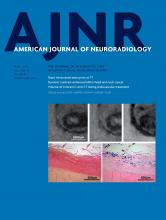Table of Contents
Perspectives
Review Article
Practice Perspectives
General Contents
- Computational Identification of Tumor Anatomic Location Associated with Survival in 2 Large Cohorts of Human Primary Glioblastomas
Preoperative T1 anatomic MR images of 384 patients with glioblastomas were evaluated by an automated computational image-analysis pipeline to determine the anatomic locations of tumor in each patient. Voxel-based differences in tumor location between good and poor survival groups identified in the training cohort were used to classify patients in The Cancer Genome Atlas cohort into 2 brain-location groups, for which clinical features, messenger RNA expression, and copy number changes were compared. Tumors in the right occipitotemporal periventricular white matter were significantly associated with poor survival in both training and test cohorts. Tumors in the right periatrial location were associated with hypoxia pathway enrichment and PDGFRA amplification. The authors conclude that voxel-based location in glioblastoma is associated with patient outcome and may have a potential role for guiding personalized treatment.
- Giant Intracranial Aneurysms at 7T MRI
Seven giant intracranial aneurysms were evaluated, and 2 aneurysms were available for histopathologic examination. Aneurysm walls were depicted as hypointense in TOF-MRA and SWI sequences with excellent contrast ratios to adjacent brain parenchyma. A triple-layered microstructure of the aneurysm walls was visualized in all aneurysms in TOF-MRA and SWI. This could be related to iron deposition in the wall, and similar findings were seen in 2 available histopathologic specimens. In vivo 7T TOF-MRA and SWI can delineate the aneurysm wall and the triple-layered wall microstructure in giant intracranial aneurysms.
- A Spiral Spin-Echo MR Imaging Technique for Improved Flow Artifact Suppression in T1-Weighted Postcontrast Brain Imaging: A Comparison with Cartesian Turbo Spin-Echo
T1-weighted enhanced brain imaging was performed in 24 pediatric patients comparing the reference Cartesian TSE sequence (2 minutes 30 seconds) with a spiral spin-echo sequence (1 minutes 18 seconds) with similar spatial resolution and coverage. In 23/24 cases, spiral spin-echo was scored better than Cartesian TSE for flow artifact reduction and in 21 cases was superior in subjective preference. The authors demonstrate a relatively simple 2D spiral SE approach in T1-weighted postcontrast brain MR imaging that has minimal flow artifacts in comparison with its 2D Cartesian TSE counterpart.
- The Added Value of Volume-of-Interest C-Arm CT Imaging during Endovascular Treatment of Intracranial Aneurysms
VOI C-arm CT images were obtained in 28 patients undergoing endovascular treatment of intracranial aneurysms and the VOI images were reconstructed by using a novel prototype reconstruction algorithm to minimize truncation artifacts from double collimation. The reconstruction accuracy of VOI C-arm CT images was assessed quantitatively by comparing them with the full-head noncollimated images. Quality of VOI C-arm CT images was comparable with that of the standard Feldkamp, Davis, and Kress reconstruction of noncollimated C-arm CT images. The authors conclude that VOI imaging allows multiple 3D C-arm CT acquisitions and provides information related to device expansion, parent wall apposition, and neck coverage during the procedure, with very low additional radiation exposure to the patient.
- Cerebral Blood Flow Improvement after Indirect Revascularization for Pediatric Moyamoya Disease: A Statistical Analysis of Arterial Spin-Labeling MRI
The authors evaluated 15 children treated by indirect cerebral revascularization with multiple burr-holes between 2011–2013. Arterial spin-labeling MR imaging and T1 sequences were analyzed under SPM8 before and after the operation (3 and 12 months). Group analysis showed statistically significant preoperative hypoperfusion in the MCA territory in the Moyamoya hemispheres and a significant increase of cerebral perfusion in the same territory after revascularization. The authors conclude that SPM analysis of arterial spin-labeling MR imaging offers a noninvasive evaluation of preoperative cerebral hemodynamic impairment and an objective assessment of postoperative improvement in children with Moyamoya disease.
- Imaging Psoas Sign in Lumbar Spinal Infections: Evaluation of Diagnostic Accuracy and Comparison with Established Imaging Characteristics
In this retrospective case-control study, the authors evaluated lumbar spine MR imagings during a 30-month period that were requested for the evaluation of discitis-osteomyelitis. Fifty age-matched control patients were compared with 51 biopsy-proved or clinically diagnosed patients with discitis-osteomyelitis. The investigators assessed the randomly organized MR imaging examinations for abnormalities of the psoas musculature, vertebral bodies, discs, and epidural space. Psoas T2 hyperintensity demonstrated high sensitivity (92%), specificity (92%), and positive likelihood ratio (11.5). They conclude that psoas T2 hyperintensity, the imaging psoas sign, is highly correlated with discitis-osteomyelitis.



